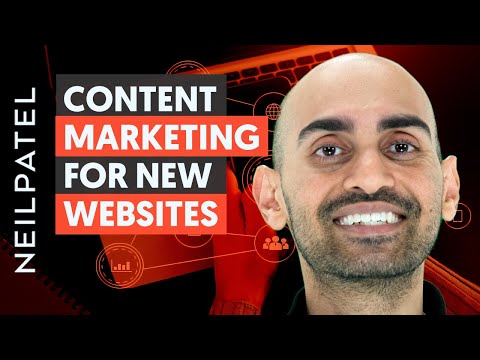How to Leverage Content Marketing When You Have No Traffic
Can you really leverage content marketing when you have no traffic, or is content marketing something that older websites can leverage to get more traffic? Today I’m going to teach you how you can leverage content marketing when you have no traffic.
The first tip I have for you is to leverage infographics.
And don’t worry, you’re not going to have to pay a designer to create an infographic.
If you want, you can, but this is a very specific strategy that I know is super effective and works when you have no traffic.
So what I want you to do is go into Ubersuggest and find all the popular blogs based off of social shares, backlinks, and search traffic, all the articles around the web that are popular around the keyword that you’ll target..
Find one that has a lot of steps or numbers, or find one that is very technical, that you think would be much better if it was done in a visual form.
Now what I want you to do is to go to sites like Canva where you can create an infographic with that data that you got from that blog article.
So in essence what you’re doing is you’re using these design tools, you’re taking the text-based content that you found the article on, and you’re taking the steps in there, you’re creating a visual infographic, and you’re citing your source.
But the infographic’s on roughly the same topic that the article was on. Because think of it this way, if that article that’s text-based was popular, the infographic version should be more popular.
So now that you have your infographic, you put it on your website. And I want you to then go back to Ubersuggest, look up all the people who linked to that article, because it will show you. I want you to hit up each and every single one of those sites. And I want you to send them an email as in the template I share in this video.
Now your infographics won’t rank as well as your text-based articles, but your infographics will start generating more social shares, more backlinks.
The next strategy I have for you is to create a roundup list.
So I want you to go back to Ubersuggest, type in any keyword that you’re trying to go after, click on the content ideas report. This will show you all the popular blog posts in that space.
Let’s say it’s on web design, and that’s a keyword that you put in. It’ll show you all the popular articles that talk about web design.
I want you to then do a roundup post breaking down things like 101 web design resources that you can’t live without, 101 web design resources that you have to check out.
And you just don’t put the link in your roundup post. You also want to have a paragraph or two describing each article.
So now that you have your roundup post, you published it, you can go back to Ubersuggest, that content ideas report, look up all the people that linked to those articles.
Hit up all those site owners with the email template I share in this video.
You’ll notice that you’ll start getting a lot of links. Some of those people will even share the articles. You could also ask them to share it instead of linking to it.
The other thing that I want you to do is, those are all popular articles.
Email out those site owners who have published those articles and ask them to share your content as well.
The last tactic I have for you is leveraging Q&A sites. And it’s not in the traditional way where I’m going to tell you to post on Quora.
Instead, I want you to go to Quora and find all the popular articles within your space.
That’ll tell you all the long-tail phrases that you should create content around.
I want you to go to AnswerThePublic, and on AnswerThePublic, I want you to type in the head terms.
It’ll also give you all the other questions that people are searching for. So now you have Quora data, plus data from AnswerThePublic.
And you combine them, it’ll give you data on topics that you should create content around. I want you to also take those URLs, more so from Quora, put them in Ubersuggest.
You’ll see who’s linking to them, the keywords that they’re ranking for. The keywords that they’re ranking for is the most important part because it’s not just about the questions people are typing in.
